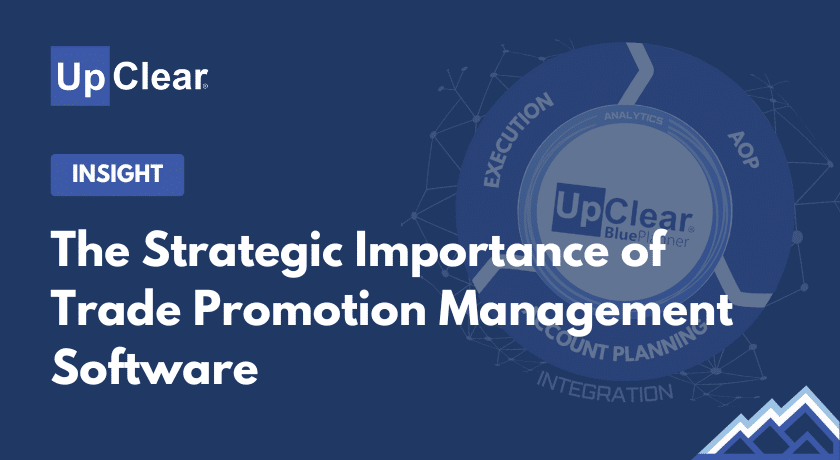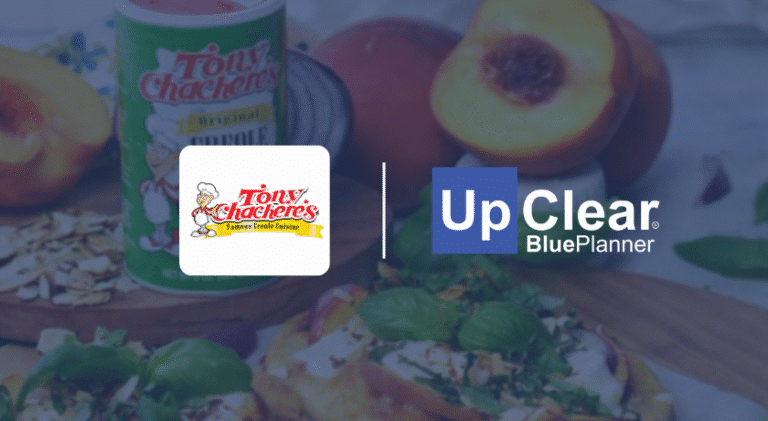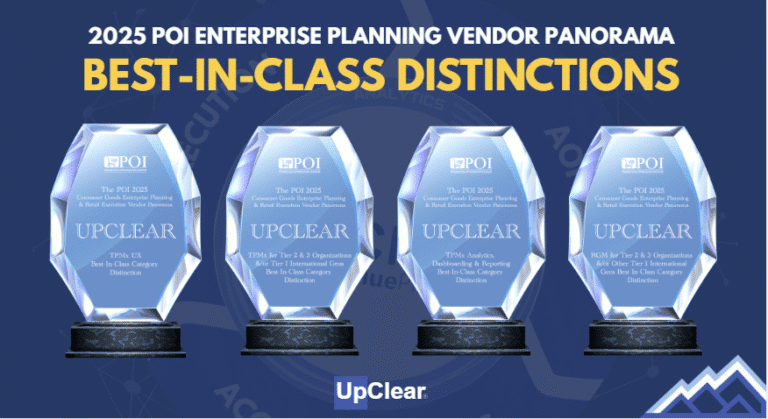
Trade promotions represent a significant investment for consumer goods and retail companies, often consuming a substantial portion of their marketing budgets. Effective management of these promotions can significantly impact a company’s volume, revenue and profitability. Trade Promotion Management (TPM) software, coupled with advanced modules such as Revenue Growth Management (RGM) and Trade Promotion Optimisation (TPO), provides comprehensive solutions beyond just execution, optimisation and analytics for trade promotions.
TPM software enables meticulous planning by leveraging historical data and market trends to forecast outcomes, allocate budgets effectively and proactively manage in year trade spend. During execution, it integrates with business systems to manage logistics and inventory, ensuring smooth implementation. Optimisation is enhanced through RGM, which focuses on strategic pricing and assortment, and TPO, which uses advanced analytics and machine learning to refine promotional tactics in real-time.
Finally, revenue management software offers robust analytical tools to evaluate promotional performance, providing insights that inform future strategies and maximise ROI. This paper explores the strategic importance of TPM software, its benefits and key watch-outs to deliver success, and how additional modules like TPO and RGM can further enhance TPM capabilities. The discussion specifically highlights the offerings of UpClear BluePlanner.
TPM software addresses the complexity of trade promotions by providing a structured, democratized and operational approach to planning, executing, and analysing these activities, giving organizations the capability to proactively manage and drive performance. By leveraging TPM software, companies can make data-driven decisions, maximising the effectiveness of their promotional efforts. The software delivers real-time insights and analytics on promotion performance, enabling quick adjustments and informed strategy development. Additionally, TPM software automates many manual processes involved in trade promotions, enhancing efficiency and reducing the risk of errors.
How TPM Software Works
TPM software facilitates detailed promotion planning, including budget allocation, calendar creation, and forecasting. It uses historical data and market trends to predict the outcomes of planned promotions, ensuring alignment with business objectives. During the execution phase, TPM software supports the implementation of promotional activities by coordinating efforts among sales, finance, marketing, and supply chain teams. Post-promotion, robust analytics and reporting tools evaluate the effectiveness of the promotions, enabling reviews to identify successful strategies and areas for improvement.
Benefits of TPM:
TPM Considerations:
– Data & Data Integration: As with all things, TPM requires the right inputs to drive maximum value and benefit. And the data needs to be cleansed and organized. Organisations should consider this a prerequisite before embarking on a full implementation.
– Cost: The initial investment and ongoing maintenance costs may be prohibitive for smaller organisations, with lower revenues and less need due to lower trade and promotional investment.
– Change Management: Adoption of TPM software requires changes in processes and workflows. It empowers organisations and operationalises and democratizes the capability, so the change management journey to bring teams and employees along need to be planned. There are clear benefits for all stakeholder departments, so it’s about early communication, engagement and setting the goal and benefits.
Trade Promotion Optimisation (TPO) – an introductory summary
Trade Promotion Optimisation (TPO) is an advanced module that enhances Trade Promotion Management (TPM) by utilising predictive analytics and machine learning to optimise promotional strategies. TPO analyses historical data and external factors to forecast promotion outcomes and optimise promotional spend. It enables businesses to simulate various promotional scenarios, predict ROI, and identify the most effective strategies. By optimising promotional spend, TPO enables companies to optimize their volumes, trade investment and drive better returns. Additionally, TPO provides deeper insights into the drivers of promotion effectiveness, facilitating promotional and trade investment strategic reviews.
Benefits of TPO:
– Improved ROI: TPO helps maximise the return on promotional investments by identifying the most effective strategies and eliminating less effective and / or efficient activity.
– Predictive Insights: By forecasting & tracking promotional outcomes, TPO enables proactive decision-making and reduces the risk of suboptimal promotions.
– Scenario Analysis: TPO allows for testing various scenarios to determine the best course of action, providing a clear view of potential outcomes before committing resources.
Revenue Growth Management (RGM) – Intro Exec Summary
Revenue Growth Management (RGM) is another advanced module that complements Trade Promotion Management (TPM) by focusing on maximising revenue and profitability through optimised pricing, promotions, and assortment strategies. RGM uses data analytics to set optimal prices that maximise revenue while considering market demand and competitor pricing. It identifies the most profitable product mix to maximise sales and profitability across different channels and customer segments. By optimising pricing and product assortments, RGM helps companies maximise their revenue potential. Additionally, RGM provides valuable insights into consumer behaviour and market trends, enabling more effective strategic decisions.
Benefits of RGM:
– Revenue Maximisation: RGM helps set optimal pricing, selecting the right portfolio and product mix, leading to higher revenue and profitability.
– Market Insights: RGM provides detailed insights into consumer behaviour and market trends, supporting more informed and strategic decision-making.
– Competitive Advantage: By continuously optimising pricing, range, trade investment and execution, RGM can provide a significant competitive edge in the market.
When to Add TPO and RGM Modules
The decision to integrate RGM and TPO modules into TPM should be based on several factors. On top of any potential existing challenges, and current gap in capability and ability to reach goals, organisations should consider the following:
– Maturity of TPM Processes: Ensure that TPM processes are well-established and data quality is reliable before adding more advanced modules. This foundation is crucial for the accurate analysis and optimisation that RGM and TPO provide.
– Market Complexity: Companies operating in highly competitive markets or those experiencing significant margin pressure can benefit greatly from the enhanced capabilities of RGM and TPO. These tools help navigate complex market dynamics and optimise promotional and pricing strategies.
– Strategic Objectives: If the company aims to align promotions with broader revenue and profitability goals, RGM and TPO offer integrated insights that support these objectives. They provide a holistic view of how promotions, pricing, and product assortments impact overall business performance.
– Data Readiness: Assess the organisation’s data sources, coverage, quality and infrastructure. RGM and TPO require robust data and data management systems to integrate and analyse large volumes of data from multiple sources effectively.
Case Study 1: Global Consumer Goods Company
A global consumer goods company implemented TPM software to manage its extensive trade promotions across multiple regions. By integrating TPO, the company was able to forecast promotion outcomes more accurately, resulting in a 15% increase in promotional ROI. Additionally, the use of RGM allowed the company to optimise its pricing strategies, leading to a 10% increase in revenue. The combination of TPM, TPO, and RGM provided the company with a comprehensive view of its promotional effectiveness and market dynamics, enabling more strategic decision-making.
Case Study 2: Mid-Sized Food Manufacturer
A mid-sized food manufacturer sought to enhance its promotional capabilities to compete more effectively in a crowded market. By adopting TPM software, the manufacturer improved the accuracy of its promotion planning and execution. The addition of TPO enabled the manufacturer to simulate different promotional scenarios, optimising its promotional spend and achieving a 10% increase in ROI. RGM helped the manufacturer identify the most profitable product mix, leading to a 5% increase in sales. The integrated approach provided the manufacturer with a strategic advantage in a highly competitive market.
Trade Promotion Management software is a powerful tool for consumer goods and retail companies, providing essential capabilities for planning, executing, and analysing trade promotions. It’s the foundational step to better visibility, control and proactive management of trade and promotional investment. Is the first step to enabling firms to better insight, collaboration and the ability to optimize volumes and revenue. The integration of advanced modules such as Trade Promotion Optimisation (TPO) and Revenue Growth Management (RGM) can further enhance these capabilities, enabling companies to maximise their revenue and profitability. Strategic integration of TPO and RGM and software and capabilities be approached with careful consideration of market dynamics, data readiness, and business objectives.
BluePlanner, UpClear’s Gross-To-Net Revenue Management AI-Powered software, empower Consumer Goods brands to maximize revenue performance and trade investment returns through streamlined processes, efficient automation and a single source of truth for the business, enabling better collaboration, actionable insights and proactive gross to net revenue management. For more detailed insights and understanding, contact UpClear

Gabriele Platé has over 15 years of experience in revenue management and enterprise software, specializing in the Consumer Goods sector. Currently leading Global Go-to-Market at UpClear, Gabriele has held various roles across Business Development, Client Success, and Delivery during his decade-long tenure with the company. With a proven track record of helping Consumer Packaged Goods (CPG) companies build and enhance Revenue Growth Management (RGM) capabilities, Gabriele drives commercial transformation through the integration of technology, processes, and data. His expertise has been honed through past roles at Accenture and AB InBev.
At UpClear, our mission is to empower Consumer Goods brands to maximize revenue performance and trade investment returns through intelligent, collaborative software—providing a single source of truth, streamlined automation, and actionable insights.
BluePlanner Revenue Management software supports end-to-end processes, from Annual Operating Planning to Account Planning and Execution.



